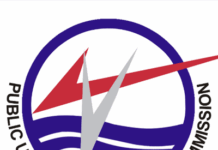
In our organizations we are faced with risk. These red light keep starring us in the face but we often ignore them until an issue occurs, then we either blame others, or better still – the devil -, or sing the popular Ghanaian dirge “ had I known”. But these situations could have been avoided if proper steps were taken from the onset to avert them. Risk in simple parlance is anything that prevents you from achieving your objectives
Risk assessment is the process where you: Identify hazards, analyze or evaluate the risk associated with that hazard and determine appropriate ways to eliminate or control the hazard.
In everyday expressions, a risk assessment is a comprehensive look at your place of work to identify those things, events, activities, situations, processes, etc that may cause harm, injury or danger particularly to people. After identification is made, you evaluate how level of impact or likely and severe the risk is, and then decide what measures should be in place to effectively prevent or control the harm from happening.
Why Risk Assessment.
The importance of Risk assessments can never be ignored as they form an integral part of a good occupational health and safety management plan.
They help to:
• Create consciousness of hazards and risks.
• Identify who may be at risk (employees, outsourced workers, visitors, contractors, the public, etc who may come into contact with the organization).
• Determine if existing control measures are adequate or if more should be done.
• Prevent injuries or illnesses when done at the design or planning stage.
• Prioritize hazards and control measures.
The purpose of the risk assessment process is to remove a hazard, reduce or eliminate the level of its risk by adding precautions or control measures, as necessary. By doing so, you have created a safer and healthier workplace.
Performing a risk assessment program.
Assessments initiative should be initiated by top management and be done by a competent team of individuals who have a good working knowledge of the workplace. Staff should be involved always, including supervisors and workers who work with the process under review, as they are the most familiar with the operation.
To do an assessment, one must:
• Identify hazards.
• Evaluate the likelihood of an injury or illness occurring, and its severity.
• Consider normal operational situations as well as non-standard events such as shutdowns, power outages, emergencies, etc.
• Review all available health and safety information about the hazard such as MSDSs, manufacturer’s literature, and information from reputable organizations, results of testing, etc.
• Identify actions necessary to eliminate or control the risk.
• Monitor and evaluate to confirm the risk is controlled.
• Keep any documentation or records that may be necessary. Documentation may include detailing the process used to assess the risk, outlining any evaluations, or detailing how conclusions were made.
When doing an assessment, you must take into account:
• The methods and procedures used in the processing, usage, handling or storage of the substance, etc.
• The actual and the potential exposure of workers.
• The measures and procedures necessary to control such exposure by means of engineering controls, work practices, and hygiene practices and facilities.
By determining the level of risk associated with the hazard, the employer and the joint health and safety committee can decide whether a control program is required.
It is important to remember that the assessment must take into account not only the current state of the workplace but any potential situations as well.
Identification of Hazards.
Overall, the goal is to find and record possible hazards that may be present in your workplace. As mentioned, it may help to work as a team and include both people familiar with the work area, as well as people who are not – this way you have both the “experienced” and “fresh” eye to conduct the inspection.
To be sure that all hazards are found:
• Look at all aspects of the work.
• Include non-routine activities such as maintenance, repair, or cleaning.
• Look at accident / incident / near-miss records.
• Include people who work “offsite” either at home, on other job sites, drivers, teleworkers, with clients, etc.
• Look at the way the work is organized or “done” (include experience and age of people doing the work, systems being used, etc).
• Look at foreseeable unusual conditions (for example: possible impact on hazard control procedures that may be unavailable in an emergency situation, power outage, etc.).
• Examine risks to visitors or the public.
• Include an assessment of groups that may have a different level of risk such as young or inexperienced workers, persons with disabilities, or new or expectant mothers.
It may help to create a chart or table like below:
Table 1
Example of Risk Assessment
Task Hazard Risk Priority Control
Delivering product to customers Drivers work alone May be unable to call for help if needed
Drivers have to occasionally work long hours Fatigue, short rest time between shifts
Drivers are often in very congested traffic Increased chance of collision
Longer working hours
Drivers have to lift boxes when delivering product Injury to back from lifting, reaching, carrying, etc.
Level of hazard (poses a risk)
Each hazard should be studied to determine its’ level of risk. To research the hazard, you can look at:
• Product information / manufacturer documentation.
• Past experience (workers, etc).
• Legislated requirements and/or applicable standards.
• Industry codes of practice / best practices.
• Health and safety material about the hazard such as material safety data sheets (MSDSs), or other manufacturer information.
• Information from reputable organizations.
• Results of testing (atmospheric, air sampling of workplace, biological, etc).
• The expertise of an occupational health and safety professional.
• Information about previous injuries, illnesses, “near misses”, accident reports, etc.
Remember to include factors that contribute to the level of risk such as:
• The work environment (layout, condition, etc.).
• The capability, skill, experience of workers who do the work.
• The systems of work being used.
• The range of foreseeable conditions.
Prioritizing risks
Ranking or prioritizing hazards is one way to help determine which hazard is the most serious and thus which hazard to control first. Priority is usually established by taking into account the employee exposure and the potential for accident, injury or illness. By assigning a priority to the hazards, you are creating a ranking or an action list. The following factors play an important role:
• Percentage of workforce exposed.
• Frequency of exposure.
• Degree of harm likely to result from the exposure.
• Probability of occurrence.
There is no one simple or single way to determine the level of risk. Ranking hazards requires the knowledge of the workplace activities, urgency of situations, and most importantly, objective judgement.
Controlling of Risk
Once you have established your top priorities, you can decide on ways to control each specific hazard. Hazard control methods are often grouped into the following categories:
• Elimination (including substitution).
• Engineering controls.
• Administrative controls.
• Personal protective equipment.
Review and monitoring
It is important to know if your risk assessment was complete and accurate. It is also essential to be sure that changes in the workplace have not introduced new hazards or changed hazards that were once ranked as lower priority to a higher priority.
It is good practice to review your assessment on a regular basis to be sure that nothing has changed and that your control methods are effective.
Triggers for a review can also include:
• The start of a new project.
• A change in the work process or flow.
• A change or addition to tools, equipment, machinery (including locations or the way they are used).
• New employees.
• Moving to a new building or work area.
• Introduction of new chemicals or substances.
• When new information becomes available about a current product.
Documentation for a risk assessment
Keeping records of your assessment and any control actions taken is very important. You may be required to store assessments for a specific number of years. Check for local requirements in your jurisdiction.
The level of documentation or record keeping will depend on:
• Level of risk involved.
• Legislated requirements.
• Requirements of any management systems that may be in place.
Your records should show that you:
• Conducted a good hazard review.
• Determined the risks of those hazards.
• Implemented control measures suitable for the risk.
• Reviewed and monitored all hazards in the workplace.
(This article was adapted from the Canadian center for occupational health and safety)
About the Writer.

Peter A. Williams is a Tax consultant, a Chartered Accountant and Certified Business Process Outsourcing Master Trainer and an SME finance coach. He blogs on issues on Finance, Management, Fraud, risk, Tax and business process re-engineering. He currently works with Pentecost University College as a Deputy Account Manager and was part-time Lecture in Quantitative Methods and Advance Taxation. He consults for Gospelgh.com pro bono. He may be contacted via aklamationpet@gmail.com or you can read more articles via aklamanuwilliams.wordpress.com




























